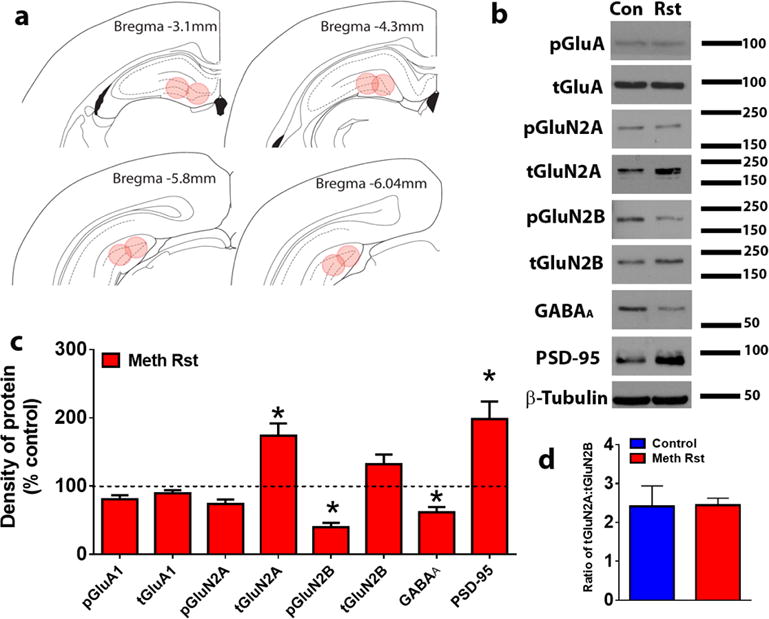Figure 5.

(a-b). Representative traces of action potentials elicited by depolarizing current injections. Traces were recorded from GCNs from control (a) and methamphetamine reinstated (b) rats. (c-d) Representative traces of fAHP from controls (c) and reinstated (d) rats. (e-h) Comparison of intrinsic and active membrane properties. Analysis across all cells indicated that under baseline conditions resting potential (e), membrane resistance (f), inter-spike interval (ISI, g), fAHP (h) of GCNs showed significant difference between control and reinstated rats. (i) Graphical relationship between the number of spikes elicited by increasing current injections in current-clamp recording. (j) Electrophysiological properties of GCNs from control and all other treatment groups. *P<0.05 vs. controls, #p<0.05 vs. Meth Ab, $p<0.05 vs. Meth Ext by ANOVA in e, f, h; *P<0.05 vs. 1st ISI by repeated measures ANOVA in g; *P<0.05 vs. controls by repeated measures two-way ANOVA and #P<0.05 significant interaction in i. Data shown are represented as mean +/− SEM. Number of GCNs, n=7-8 controls, n=8 meth (acute withdrawal), n=14-16 meth ab (methamphetamine abstinence), n=13-15 meth ext (methamphetamine extinction) and n=6-8 meth rst (methamphetamine reinstated).
